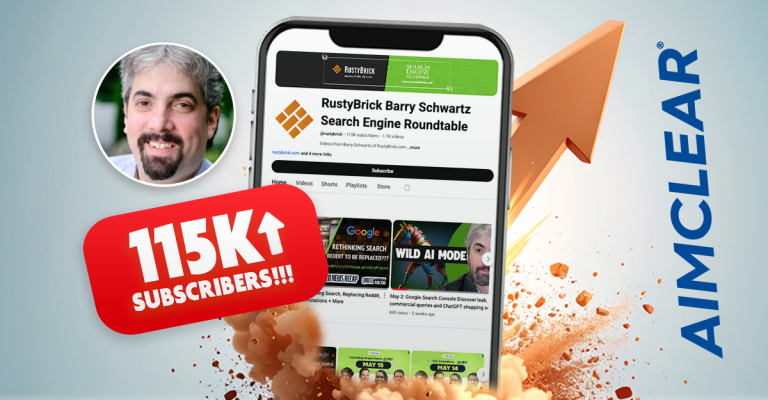
B2B, B2C…B2 anything, every marketing department would love to somehow crack the social media code. Be it by content marketing, participation in Twitter, YouTube, Facebook, LinkedIn, FourSquare, Flickr, Digg, Delicious, etc… invariably, the conversation turns to the same question: “What are we going to do and who’s going to actually execute on this every day at the office?”
Then comes the obligatory: “How are we going to measure it?” and, “When will we set business goals?” or, “Are we just doing this for the hell of it ’cause everybody else does?” All are reasonable questions. This post offers time-tried blueprints for building out a social media marketing plan, while empowering data-driven, KPI-oriented community managers.
In order to know what to do, social media research should be undertaken. The process should be as diligent and exhaustive as keyword research is traditionally for SEO. In order to empower an employee to take the research and run, two components are necessary: a data-driven plan and a community manager strong enough to participate on behalf of the brand, while being tactical along lines commissioned by the research, strategy and KPIs (key performance indicators).
For today’s post, I’d like to share a scope of services, for easy cut-and-paste, that lays out a process for undertaking steps required to research, plan, train and execute. The following scenario assumes that your company has an in-house individual who has sort of taken the ball and run with it. Let’s presume you have a modest budget, can use external contractors within reason and are ready to rock.
As pre-clarification:
a) Here’s why this plan looks at search as part of the social media process: to our mind, search– segmenting out keywords which demonstrate sure-fire intent– is still the most focused medium. Dude, that’s why Google search SERPs cost so much more than Facebook Ads. It’s why Google’s storied Content / DoubleClick network does not convert as well as search and costs a lot less per click. Intent-focused search is still the most targeted form of marketing. Therefore, to fully understand the environmental context in which social media takes place, we believe it’s pretty important to grasp things from a search marketing perspective.
Think of it this way: many or most of the same people searching Google hang around in Facebook, LinkedIn and other sites. These users ask questions using the Google tool and Facebook’s social networking software to live their lives together in-community. Search clarifies social and vice versa.
b) The reason this plan leans on social segment research using Facebook Ads’ (paid) targeting tools is because Facebook is the largest sampling and best DIY social graph targeting utility on earth by far. Think about it. For SEO (organic search) we’ve been using tools that profile paid search inventory (PPC). Since search engines sell searches, they are forced to reveal their inventory in tools like Google AdWords Keyword Tool. The reason we use Google’s tool is because it’s the biggest sampling of search in America
Social is the same in that where sites sell their social “inventory,” revealing said inventory is required. Therefore, we look at Facebook paid segments to gain terrific insight, not only on Facebook paid and organic, but to get ideas for other channels. For instance, learning that Facebook has a vibrant fire marshals community also means we can find them on LinkedIn, see what videos exist on YouTube or how these users can be reached organically and paid on LinkedIn.
This process of coming to a plan (research, strategy, KPIs & data-driven channel tactics) obviously needs to start with blueprint as to how the team will come to it. We offer the following as a starting point.
The rest of this post is written in the style of a contract’s scope. This verbiage should not be construed, in any way, as legal advice by this writer. Rather, consume the language as representative of one team’s code-cracking theories. Grab what insight you like and go from there. I’d be appreciative if you would share any permutations or extrapolations you create with the community.
Marty Weintraub
Rome, July 2010
In this scenario “Client” is you and [Agency] is whoever is facilitating, in or out of house.
Scope. The objective is to provide organic & paid social (contextual) research, advise in the creation of a social media marketing plan to integrate with Client’s search marketing, and host community management protocol development and training.
Demographic Research & Training
Interview Client for deeper understanding of products, goals and big picture. Audit existing plans, accomplishments, liabilities, concerns, ideas and any available analytics including any paid and/or organic analytics, Facebook Fan Page(s) Insights, digital press releases, inbound links, chatter, sentiment, YouTube Insights any other statistics available from client or publicly and associated case studies.
Host training for Client’s Community Manager in [Agency] office for 5 business days to participate, as [Agency] does the demographic research. [Agency] and Client will work together to support and grow Client’s internal expansion of capabilities to execute [Agency]’s recommendations and self-augment the social media marketing plan.
Adapt and augment existing data and undertake new demographic research focused on identifying focused market segments. Conduct social interest and authority user research. Deliverables are .xls &. docx files segmented by master social segments. “Master social segments” means social segments sorted to sufficiently delimit categories and sub-categories, suitable for future social usage, but not segmented enough for responsible deployment in Facebook Ads.
- Perform Competitive Intelligence to research competitors (and/or related endeavors in other social verticals) previous and existing organic social marketing campaigns to see what was effective.
- Review search keyword inventory, sorted by query intent, for main product/service lines, users, etc… to advise the social research.
- Map contextual relevancy of inventory discovered to various social channels including Twitter and other niche topical communities we discover to be relevant. Identify authority users.
- Identify Facebook Ads (paid contextual) & (organic contextual) social participatory segments. For clarification, organic “interest segments” are FB groups, events, people, fan pages, friends, applications, etc. Identify inventory as FB tools and privacy leaks allow.
- Identify YouTube and other video sites’ social segments susceptible to Client’s messages & brand.
- Identify social segments as [Agency] & client define together and based on the new research.
Deliver research to client. Deliverable is a zipped directory of tabbed.xls and/or docx files. Deliverables shall be deemed as delivered, when [Agency] emails zipped directory to client or delivers DVD by physical delivery.
Create Integrated Social Media (Contextual) Marketing Plan
Build out demographic research to beneficial and attainable social marketing plan including suggested usage of research as applicable, including but not limited to Facebook, YouTube, Twitter, LinkedIn and/or other topical niche communities.
Recommend usage of research data by Client’s Community Manager and foster the ethic of analytics/KPI driven Community Management. Outline strategy, participatory protocol and recommend tactics. Create timeline for implementation, goals, outline of required resources and budget. Use research to advise marketing plan and goals.
- Evaluate Search & Social (contextual) Inventory in a Think Tank Environment, [Agency] & Client’s Representative.
- Determine Controlling Strategy to Guide KPIs & Channel Tactics
- Establish Reasonable KPIs (Goals/Key Performance Indicators)
- Set Branding KPIs
- Set Direct Response Lead Gen’ KPIs
- Set Direct Response Sales KPIs
- Set Friending KPIs
- Set Customer Service KPIs
- Set Other KPIs
- Outline Projected Costs & Recommended Vendors
- Define & Review Social Media Analytics For Measuring KPIs
- Client’s Community Manager, in addition to participating in research and marketing planning with [Agency]’s team, will spend self-directed time piloting and testing ideas the team generates.








